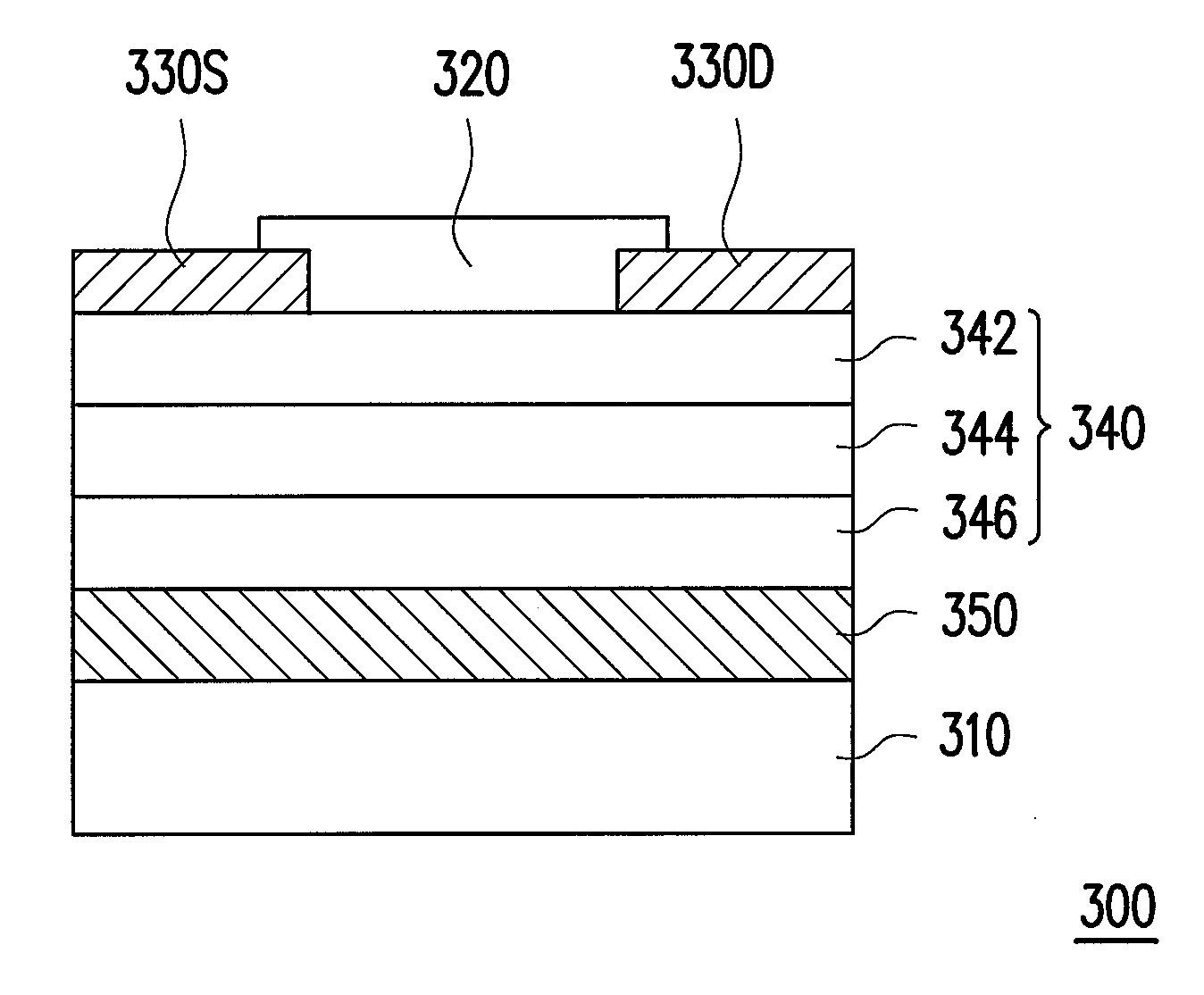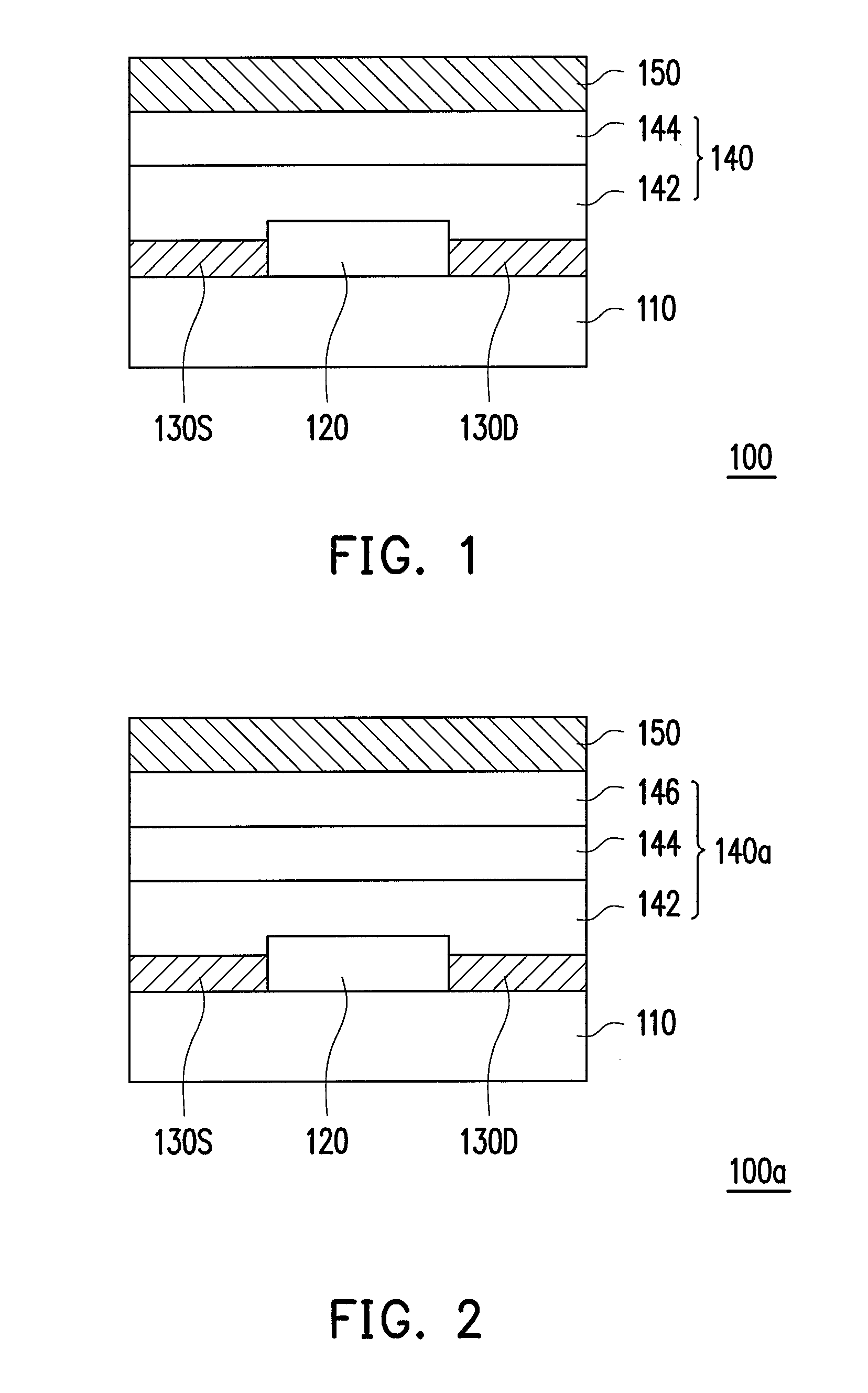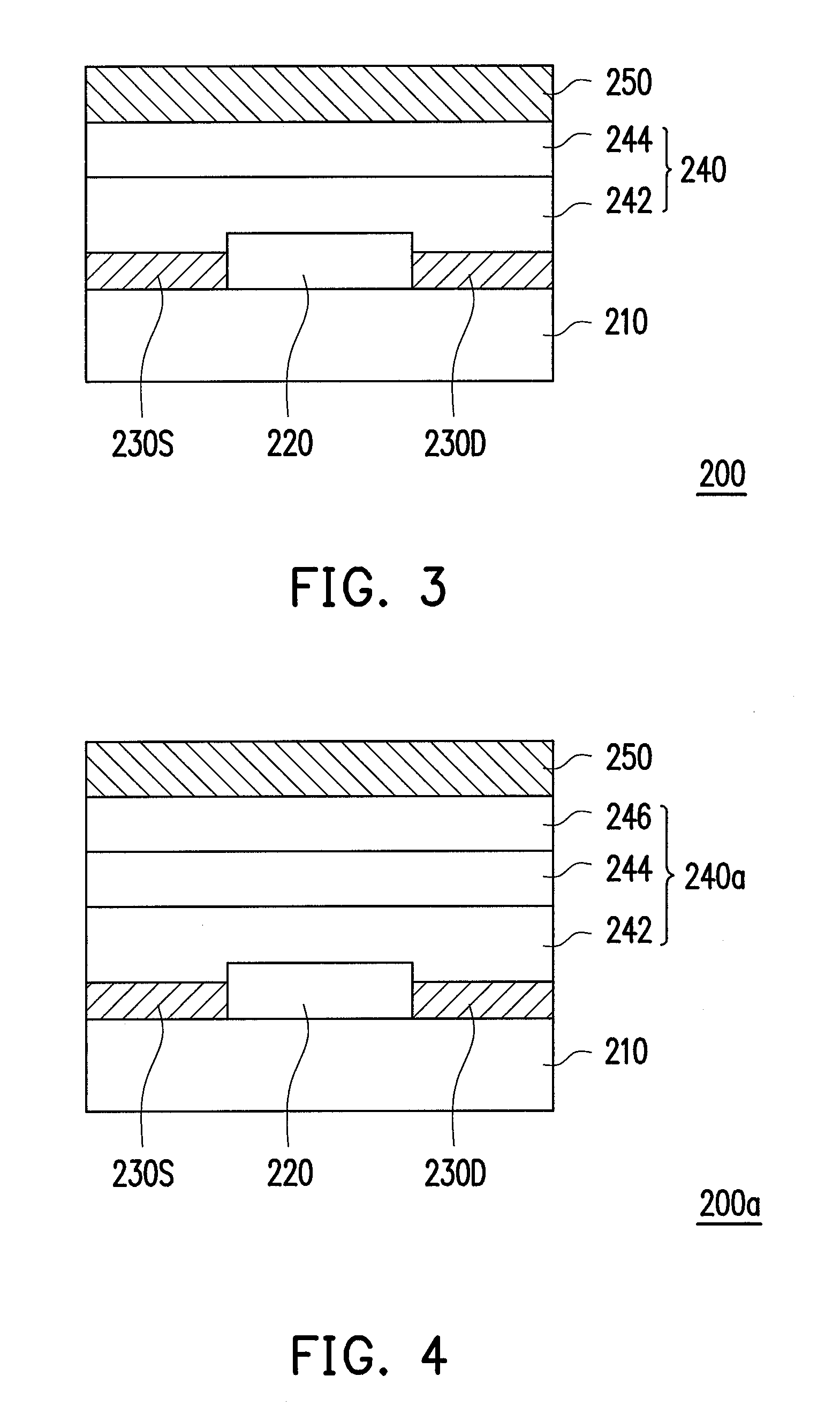Transistor
a transistor and transistor technology, applied in the field of transistors, can solve the problems of inability to recover the above changes in electrical properties in milliseconds, and the operation current change cannot be achieved in milliseconds, and achieve the effect of low photosensitivity and high electrical stability
- Summary
- Abstract
- Description
- Claims
- Application Information
AI Technical Summary
Benefits of technology
Problems solved by technology
Method used
Image
Examples
first embodiment
[0020]FIG. 1 is a schematic cross-sectional view of a transistor according to a first embodiment of the invention.
[0021]Referring to FIG. 1, a transistor 100 includes a substrate 110, a semiconductor layer 120, a source 130S and a drain 130D, a stacked insulating layer 140, and a gate 150. The semiconductor layer 120 is disposed on the substrate 110 and adopts a first type carrier as the main carrier. The source 130S and the drain 130D are disposed on the substrate 110 and at two sides of the semiconductor layer 120. Specifically, in the present embodiment, the first type carrier is a hole; that is, the semiconductor layer 120 is a P-type semiconductor layer having more holes, for example. The semiconductor layer 120 is made of inorganic semiconductor or organic semiconductor. Here, inorganic semiconductor includes amorphous silicon, polysilicon, or oxide semiconductors, and organic semiconductor includes organic small molecules, organic polymers, or a mixture thereof. Moreover, the...
second embodiment
[0027]FIG. 2 is a schematic cross-sectional view of a transistor according to a second embodiment of the invention. A transistor 100a of the present embodiment and the transistor 100 of FIG. 1 have similar structures; however, the main difference is that the transistor 100a further includes a third insulating layer 146. Thus, only the different parts are described hereinafter.
[0028]Referring to FIG. 2, the transistor 100a includes the substrate 110, the semiconductor layer 120, the source 130S and the drain 130D, a stacked insulating layer 140a, and the gate 150. The stacked insulating layer 140a includes the first insulating layer 142, the second insulating layer 144, and the third insulating layer 146 stacked sequentially on the semiconductor layer 120. In the present embodiment, the semiconductor layer 120 adopts holes as the main carrier, and is, for example, a P-type semiconductor layer. The first insulating layer 142, for example, contains the first group which withdraws holes...
third embodiment
[0032]FIG. 3 is a schematic cross-sectional view of a transistor according to a third embodiment of the invention. A transistor 200 of the present embodiment and the transistor 100 of FIG. 1 have similar structures; however, the main difference is that the semiconductor layer 220 of the transistor 200 adopts electrons as the main carrier. Thus, only the different parts are described hereinafter.
[0033]Referring to FIG. 3, a transistor 200 includes a substrate 210, a semiconductor layer 220, a source 230S and a drain 230D, a stacked insulating layer 240, and a gate 250. The semiconductor layer 220 is disposed on the substrate 210 and adopts electrons as the main carrier. The gate 250 is disposed on the substrate 210. The stacked insulating layer 240 is disposed between the semiconductor layer 220 and the gate 250, and includes a first insulating layer 242 and a second insulating layer 244. Herein, the first insulating layer 242 contains a group which withdraws electrons, the second in...
PUM
 Login to View More
Login to View More Abstract
Description
Claims
Application Information
 Login to View More
Login to View More - R&D
- Intellectual Property
- Life Sciences
- Materials
- Tech Scout
- Unparalleled Data Quality
- Higher Quality Content
- 60% Fewer Hallucinations
Browse by: Latest US Patents, China's latest patents, Technical Efficacy Thesaurus, Application Domain, Technology Topic, Popular Technical Reports.
© 2025 PatSnap. All rights reserved.Legal|Privacy policy|Modern Slavery Act Transparency Statement|Sitemap|About US| Contact US: help@patsnap.com



